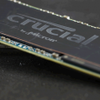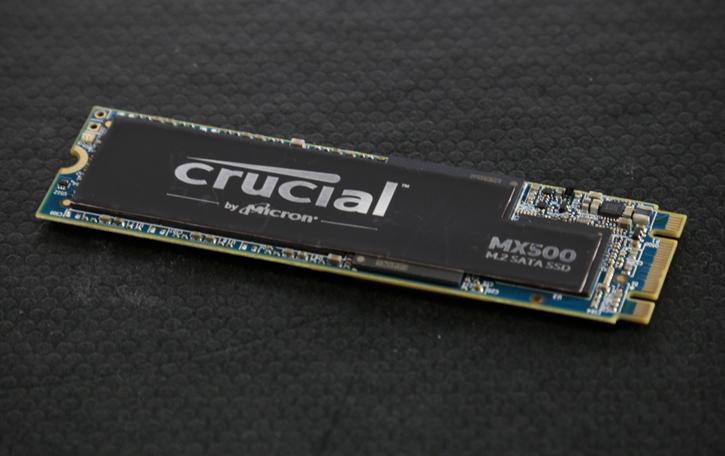Introduction
Crucial MX500 1024 GB m.2.SSD
A budget SSD at 23 cents per GB on the m.2. form factor
Crucial recently announced their new MX500 series 2.5" SSDs. But did you know that the MX500 series are available as M.2. models as well? These storage units scream value for money as you can purchase a 1TB model for €0,23 per GB. Now, the downside is that these units will remain at the same performance level as your average SATA3 SSDas well, this is intended for the budget slash value side of the market, but hey, any SSD in this class is fast enough for what it needs to be, and at that price, this unit is effective for your money. We review the new 1 TB model, at € 231,- this SSD series is among the most price-competitive M.2. SSDs available currently on the market, however, with up-to high-end class SATA3 (500 MB/sec) performance.
- SKU: CT1000MX500SSD4
- Brand: Crucial
- Form Factor: M.2 Type 2280
- Total Capacity: 1TB
- Warranty: Limited 5-year
- Specs: M.2/NGFF (2280) Single Sided • 560MB/s Read, 510MB/s Write
- Series: MX500
- Product Line: Client SSD
- Interface: SATA 6.0Gb/s
NAND flash memory (the storage memory used inside an SSD) has become cheaper thanks to the new 64-layer fabrication. Prices a few years ago settled at just under 1 USD per GB. These days a fast NVMe SSD can be found under 50 cents per GB. With parties like Samsung, Toshiba, and Micron the prices have now dropped towards and below the 30 cents per GB marker for SATA3 TLC based units. This means that SSD technology and NAND storage have gone mainstream and due to the lower prices, the volume sizes go up as well. A couple of years ago a 64 GB SSD was hot stuff, then slowly we moved to 120 GB, last year 240 GB for an SSD in a PC was the norm, this upcoming year we'll transition slowly to roughly 500 GB and 1 TB per SSD as the norm with sub prices for TLC NAND in the 25 Cents per GB range. With the market being so competitive, it brought us to where we are today. Proper volume SSDs at acceptable prices with very fast performance. Not one test system in my lab has an HDD anymore, everything runs on some form of NAND storage, while I receive and retrieve my bigger chunks of data from a NAS server here in the office. The benefits are performance, speed, low power consumption, no noise and very good reliability.
Micron (the mother company behind Crucial) recently announced the MX500 series in capacities of 250 GB, 500 GB, and 1 TB for both the m.2. and 2.5" form factors, as well as a 2 TB version on 2.5", these drives, are fitted with that new 64-layer vertically stacked NAND (also referred to as 3D NAND). It is paired towards a Silicon Motion SM2258 controller. Crucial guarantees this SSD for 5 years under warranty and/or a 360 TB (terabytes) written (TBW) for a 1 TB model. Have a peek and then let's head onwards into the review.


